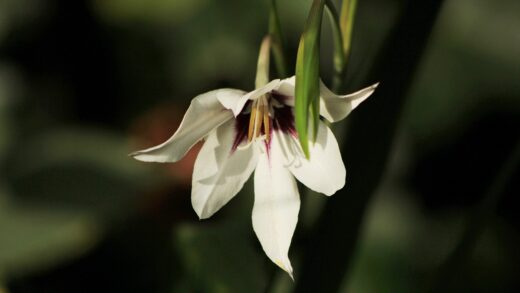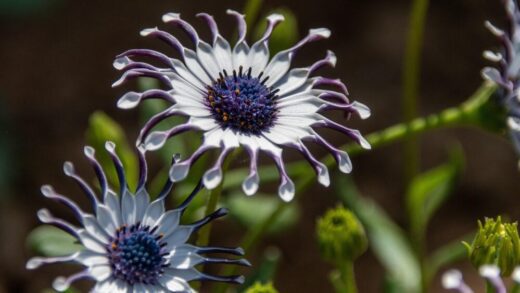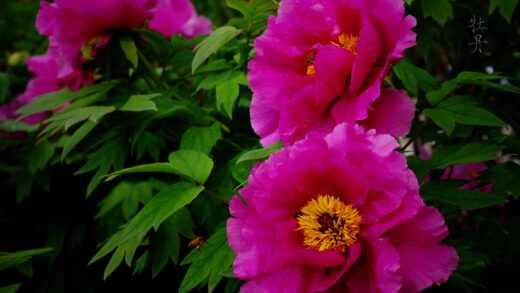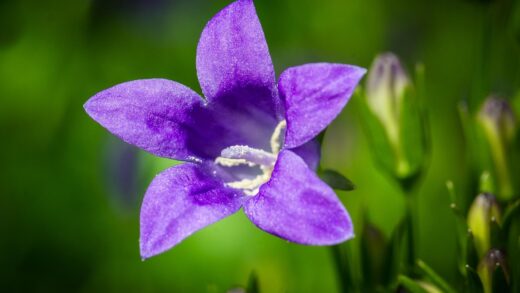Proper pruning is one of the most important maintenance tasks for a weigela, directly influencing its size, shape, health, and, most critically, its flowering performance. An unpruned weigela can quickly become an overgrown, tangled mass of woody stems with diminished flower production, while a correctly pruned shrub will remain vigorous, attractive, and covered in blooms year after year. Understanding the fundamental principles of when and how to prune is essential for any gardener wishing to maintain this shrub at its best.
The primary purpose of pruning weigela is to encourage the continuous production of new, vigorous stems, as these are the most productive in terms of flowering. Weigela blooms on “old wood,” which means the flower buds for the spring display are formed on the branches that grew during the previous summer. This key biological fact dictates the entire pruning strategy, especially its timing, which must be carefully coordinated with the plant’s flowering cycle to avoid inadvertently removing the next year’s floral show.
Beyond maximizing blooms, pruning serves several other important functions. It is used to maintain the shrub at a desired size and shape, preventing it from outgrowing its allotted space in the garden. It also improves the plant’s health by removing any dead, damaged, or diseased wood and by thinning out the canopy to increase air circulation, which helps to reduce the risk of fungal diseases. For older, neglected shrubs, a more drastic form of pruning can be used to completely rejuvenate the plant.
This article provides a comprehensive guide to the art and science of pruning weigela. We will cover the critical importance of timing, the specific techniques for routine annual maintenance, and the more intensive process of rejuvenation pruning for overgrown specimens. By mastering these techniques, you will be equipped with the knowledge to keep your weigela healthy, well-shaped, and blooming profusely for its entire lifespan.
The fundamental principles of pruning weigela
The single most important principle of pruning weigela is timing. All significant pruning must be done immediately after the shrub has finished its main flowering cycle, which is typically in late spring or early summer. This timing is crucial because it allows the plant the rest of the growing season to produce the new growth that will carry the following year’s flower buds. If you prune in the autumn, winter, or early spring, you will be cutting off the very wood where the flowers are set to appear, resulting in a severe reduction or complete absence of blooms.
More articles on this topic
The second key principle is to understand the plant’s natural growth habit. Weigela naturally has a graceful, fountain-like shape with arching branches. Pruning should aim to enhance this natural form, not fight against it. Avoid shearing the shrub into a formal, geometric shape, as this will destroy its graceful habit and can lead to a dense outer shell of growth with a dead, twiggy interior. The goal is to be selective, removing individual branches to shape the plant and improve its structure.
Another fundamental concept is the removal of the three ‘D’s: any wood that is dead, damaged, or diseased. This is the first step in any pruning job and can be done at any time of year whenever you spot a problem. Removing this wood not only improves the plant’s appearance but also eliminates potential entry points for pests and pathogens, contributing to the overall health and vigor of the shrub.
Finally, it is essential to use the right tools for the job. Sharp, clean bypass pruners are suitable for smaller stems, while loppers will be needed for branches thicker than a finger. For very large, old stems, a pruning saw is the appropriate tool. Using sharp tools ensures clean cuts that heal quickly, while keeping them clean (by wiping with rubbing alcohol) prevents the spread of disease from one plant to another.
Timing the prune for maximum blooms
The window for pruning weigela to ensure maximum flower production is relatively short and specific. The ideal time is within the few weeks immediately following the cessation of its main spring bloom. Acting within this timeframe gives the shrub the longest possible period—throughout the summer and early autumn—to develop new shoots, mature them, and form the flower buds for the next year. Delaying the prune into late summer or autumn is a common mistake that significantly jeopardizes the following season’s floral display.
More articles on this topic
For weigela varieties that are known to be rebloomers, which produce a second, smaller flush of flowers later in the summer, the timing can be slightly more nuanced. You can perform the main structural prune after the first major flush of flowers has faded. Lightly deadheading the spent blooms from this first flush can help to encourage the development of the second round of flowers. However, any heavy cutting should still be reserved for that early summer period.
An easy way to remember the correct timing is to follow the old adage: “If it flowers before June, prune when blooms are through.” Since weigela is a spring-flowering shrub, this rule applies perfectly. This contrasts with summer-flowering shrubs, such as panicle hydrangeas, which bloom on new wood (growth from the current season) and are therefore pruned in late winter or early spring before that new growth begins. Confusing these two categories is the root of many pruning errors.
By adhering strictly to this post-flowering pruning schedule, you align your maintenance activities with the natural life cycle of the weigela. This cooperation with the plant’s internal clock ensures that your efforts will be rewarded with a healthy shrub that is consistently covered in a spectacular profusion of blossoms each and every spring.
Techniques for routine annual pruning
A routine annual prune is the key to maintaining a weigela in good health and shape over the long term. This process should be undertaken each year after the flowers have faded. Begin by stepping back and assessing the overall shape of the shrub, identifying any branches that are out of place, too long, or contributing to crowding in the center of the plant. The goal is to thin and shape, not to give the plant an all-over haircut.
Start the hands-on work by removing any dead, damaged, or diseased wood, cutting it back to a healthy, outward-facing bud or to a main branch. Next, look for any branches that are crossing or rubbing against each other. Prune out the weaker or less well-placed of the two to prevent them from creating wounds that can become entry points for disease. This step is crucial for establishing a good, open structure.
The next phase is thinning. To improve air and light penetration into the center of the shrub, selectively remove about one-third of the oldest, thickest stems, cutting them right back to the base of the plant. These older stems are often less floriferous and their removal encourages the plant to produce new, vigorous, and more productive shoots from the crown. This renewal process is vital for keeping the shrub youthful and blooming well.
Finally, perform some light shaping by cutting back the tips of the remaining stems to encourage branching and create a fuller appearance. Cut back any excessively long shoots to bring them in line with the overall desired shape and size of the shrub. Always make your cuts at a slight angle, just above a leaf node or a side branch, to encourage new growth in a specific direction.
Rejuvenation pruning for overgrown shrubs
Over time, a weigela that has not been pruned regularly can become a large, overgrown tangle of thick, woody stems with very few flowers, most of which appear only at the tips of the branches. In these cases, a more drastic approach called rejuvenation or renewal pruning is needed to restore the shrub’s vigor and appearance. This process is best performed in late winter or early spring when the plant is dormant, even though it means sacrificing the flowers for the upcoming season.
There are two main methods for rejuvenating an overgrown weigela. The first and most common is the three-year renewal method. In the first year, you remove one-third of the oldest, thickest stems, cutting them down to about 10-15 centimeters from the ground. The following year, you cut back another third of the old stems, and in the third year, you remove the remaining old stems. This staggered approach allows the shrub to remain a decent size while it is being renewed and ensures some flower production in the second and third years.
The second, more drastic method is to cut the entire shrub down to about 10-15 centimeters from the ground in one go. This is a hard rejuvenation and should be reserved for healthy but severely overgrown plants. While it may seem extreme, a vigorous weigela will respond by sending up a multitude of new shoots from its base. This will result in a completely new, more compact, and highly productive shrub within two to three seasons.
After performing a hard rejuvenation, some aftercare is required. In the first summer, the new shoots will grow rapidly. The following spring, you should select the strongest and best-placed of these new stems to form the new framework of the shrub and remove any weak or crowded shoots. From this point forward, you can resume a schedule of regular annual pruning to maintain the newly rejuvenated shrub in its ideal form.
Tools and post-pruning care
Using the correct tools is essential for making clean cuts and ensuring the pruning process is safe and efficient. A pair of sharp, high-quality bypass pruners is the most important tool for pruning weigela, suitable for cutting stems up to about 1.5 centimeters in diameter. Bypass pruners have two curved blades that pass each other like scissors, making a clean cut without crushing the plant’s tissues, which helps the wound to heal faster.
For branches larger than 1.5 centimeters, a pair of loppers provides the necessary leverage to make a clean cut. For the very thick, woody stems that need to be removed during a rejuvenation prune, a sharp pruning saw will be required. It is imperative that all tools are kept sharp and are cleaned with rubbing alcohol or a bleach solution before and after use, and especially between plants, to prevent the spread of any potential diseases.
After pruning, the plant generally does not require any special care beyond its normal routine. However, it is a good practice to water the shrub well after a significant prune, especially if the weather is dry, to help reduce stress on the plant as it begins the process of healing and producing new growth. There is no need to apply pruning paint or wound sealants to the cuts; research has shown that these products can actually hinder the plant’s natural healing process.
Following the main post-flowering prune, the weigela will begin to produce new growth. It is important to provide the plant with adequate water and nutrients during this period to support this development. This new growth is what will carry the flowers for the next season, so caring for the plant well during the summer and autumn is the final step in ensuring that your pruning efforts are rewarded with a magnificent floral display the following spring.


















